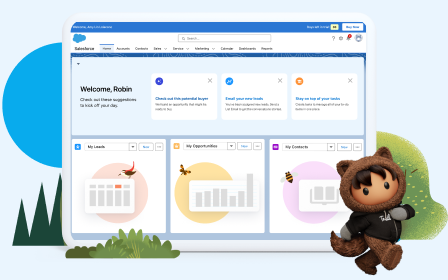Test Platform Performance at Scale
Learning Objectives
After completing this unit, you can:
- Explain the performance attributes used in scalability and load testing
- Identify tests for gauging the performance of your data at scale.
Overview
To preserve the integrity and value of your data, you also need to establish ongoing performance testing to make sure that your data strategy remains effective for your org and provides the experience and value that your users expect.
Key performance testing areas include scalability and load testing. For scalability, testing should be simulated for peak hour volumes and traffic patterns.
Basics of Scalability Testing
Scalability testing measures how well an application performs with an increase in user demand. It focuses on application behavior when hardware, database, and network changes are made to meet increases in user traffic, data volume, and transactions. Scalability testing helps identify the point at which an application can no longer scale and the underlying cause.
The following performance attributes are commonly used in scalability testing.
- Response time
- Throughput
- CPU Usage
- Memory usage
- Network usage
Basics of Load Testing
Load testing measures the response time, or customer experience, with increased user demand. If the number of customers accessing your org suddenly spikes, the customer experience should not degrade. If your system experiences greatly extended response times or becomes unstable with a rapid increase in user demand, load testing helps identify the problem areas.
Typical performance attributes monitored in a load test include:
- Peak performance
- Server throughput
- Response time under various load levels (below the breaking point)
- Robustness of hardware
- The number of user applications can be served without impacting performance.
Using the previous example of customers waiting in line at a store, scalability testing measures your org's behavior when more cashiers are added. Load testing measures customer wait time when a large number of customers are waiting in line.
Monitor Your Data
Scale Center helps you track the performance of your org and how well it is handling workloads by examining the details of user activities, also referred to as events. It also helps you keep your data secure. You can view information about individual events or track event trends to quickly identify areas of extreme data usage as well as abnormal behavior. Use information from your monitoring to update your data management strategy. This is especially important for high-scale organizations that overload or crash without proper data management.
What Events Should I Monitor?
While Scale Center provides tracking for lots of different types of events, what are some of the events that are indicative of performance at scale, at Salesforce? Here are some that matter.
- Logins
- Logouts
- Search
- URI (web clicks in Salesforce Classic)
- Lightning (web clicks [interaction], page views, performance, and errors in Lightning Experience and the Salesforce mobile app)
- Visualforce page loads
- API calls
- Apex executions
- Report exports
Let’s Wrap It Up
You learned about the importance of ongoing performance testing to ensure that your data management strategy remains effective. You’ve also gone over the basics of scalability, load testing, and the associated performance attributes.
While scalability is inherently tied to effective data management, ongoing performance testing is essential to make sure that your data strategy remains effective. This ensures the best possible customer experience that drives your business further.
Resources
- Trailhead: Salesforce Data Mask
- Salesforce Help: Secure Your Sandbox Data with Salesforce Data Mask
- External Blog: User Acceptance Testing Strategies for Large Data Volume Scenarios
- Salesforce Blog: How to Secure Your Sandbox Data with Data Mask
- PDF: Introduction to Data Governance and Stewardship
- Salesforce: Data Mask: Protect sensitive data when testing apps
